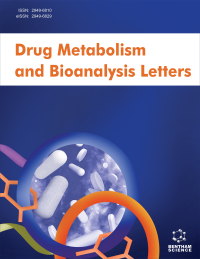-
s Colonic Degradation as Reverse Process to Flavone Biosynthesis in Plants: Similarities and Differences
- Source: Drug Metabolism and Bioanalysis Letters Formerly: Drug Metabolism Letters, Volume 16, Issue 1, Feb 2023, p. 2 - 5
-
- 01 Feb 2023
Abstract
Background: For many years, it was thought that the main function of the colon is the reabsorption of water and salt and the elimination of unused food materials. Only very recently, a crucial role of the human intestinal microbiota in the metabolism of different food constituents, including plant foods-derived flavonoids, was discovered. Currently, the knowledge about colonic degradation of ingested flavonoids, involved bacteria and produced catabolites is rapidly increasing. In general, flavonoids unabsorbed in the small intestine reach the colon, where they are exposed to the gut microbiota. Conclusion: In this perspective article, colonic degradation of flavonoids is considered a reverse process to their biosynthesis in plants, with a special focus on the subclass of flavones. According to this approach: what is composed in plants, will be decomposed in the human colon. Several inverse similarities are highlighted, including hydrolysis of flavonoid glycosides as the first step in the gut degradation contrasted with the attachment of sugar moiety as the last reaction of flavonoid biosynthesis in plants, colonic reduction contrasted with plant introduction of C2-C3 double bond in the central heterocyclic ring, or microbial ring fission contrasted with plant ring closure of the heterocyclic ring of flavones. Despite these inverse similarities, precursors of flavonoid pathway in plants are different from the spectrum of gut microbial catabolites in humans. In the human colon, a wide variety of phenolic acids are produced from the ingested flavonoids, due to the diverse enzymatic capacity of intestinal microbiota. The bioactivities and potential health impacts of these catabolites are still largely unknown.


